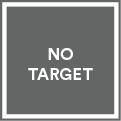- Healthy Human Population
- Local Foods
- Indicator
- Locally harvestable foods
- Vital Sign Indicator
- Index Value (index value)
- /
-


No targets are currently set for this indicator.
-
Kelly Biedenweg
- Contributing Partners
- Last Updated
- 07/31/2025 18:45:24
The locally harvestable foods indicator is intended to track the frequency of collecting different Puget Sound wild foods for traditional, subsistence, and recreational use. These include: fish, shellfish, mushrooms/plants, and animal meat.
Average index response to engagement in hunting, fishing, or foraging on a five-point scale (where 1 is never and 5 is frequently).
The health and quality of life of Puget Sound residents is partially dependent on their ability to collect local resources for ceremonial, subsistence and recreation foods. Monitoring the frequency with which residents do so, and how this varies by geography and demographics, can help managers understand where to prioritize efforts to protect or educate about the health of local foods.
It is important to note that some human populations in the Puget Sound are more dependent on wild food sources than others, for cultural, economic and subsistence reasons. As the basis for this data is a general population survey, we must be careful to not interpret our findings as local foods having low importance.
- On average, most Puget Sound residents rarely harvest local foods other than plants and berries. In 2024, the mean response to all local foods was 1.36, which equates to halfway between rarely (1-2 times per season) and never.
- Plants, berries, and mushrooms are the most likely local foods to be harvested, with about 55% of the population collecting at least one time per season.
- Approximately 23% of people fish for food, 20% collect crab or shrimp, and 14% collect oysters, mussels or clams (excluding razor clams).
- Few people engage in hunting. Approximately 4% hunt deer or elk. Less than two percent hunt waterfowl.
- Monitoring Program
- Data Source
Oregon State University Human Dimensions Lab
Data are collected every two years via paper survey and online response option to a random sample of Puget Sound households. The population is a clustered random sample of Puget Sound residents across 12 counties, with an initial sample of 9,000. Due to undeliverable addresses, the total sample reached is always less than 9,000.
- In 2024, the response rate was 23%, with a total of 1,968 responses.
- In 2022, the response rate was 20.8%, with a total of 1,271 responses.
- In 2020, the response rate was 25% for a total of 1,843 respondents.
- In 2018, the first iteration of the survey, the response rate was 28% for a total of 2,323 individual responses.
The locally harvestable foods indicator is based on one question in the survey that asks respondents to rate their engagement in harvesting seven categories of local foods on a five-point scale from never to frequently (10+times/season).
For more information on the survey, see Appendix A. Detailed Methodology and Appendix B. 2024 Survey Instrument in the 2024 Survey Report.
- Critical Definitions
Starting in 2020, we distinguished the tracking of shellfish harvest to include three separate categories: 1) clams, includes all clams except razor clams (e.g., geoducks, oysters and muschles), 2) crab and shrimp, and 3) squid.
On average, most Puget Sound residents rarely harvest local foods other than plants and berries. There is no consistency between people who harvest one food type or another. For that reason, we now recommend reporting locally harvestable foods only by food category rather than an index. This provides more management relevant information.
It is important to recognize that some of these foods are collected by cultural groups in the Puget Sound whose dependence on these foods may not be reflected in a randomized public survey.
-
Despite the COVID pandemic during 2020-2021, we did not measure any differences across the general population between 2020 and 2022. We may have hypothesized changes in local food collection due to the COVID pandemic – either motivating people to get outdoors more or limiting mobility. At a population scale, however, we did not see overall behavioral changes in local foods collection.
Bordas, A., A. Kuberski, K. Harrington, and K. Biedenweg. 2025. Human Wellbeing Vital Signs Survey 2024 Summary: A report on subjective human wellbeing indicators. prepared for the Puget Sound Partnership
Harrington, K., B. Leach, Z. Antenucci, and K. Biedenweg. 2023. Human Wellbeing Vital Signs Survey 2022 Summary: A report on subjective human wellbeing indicators prepared for the Puget Sound Partnership.
Justiniano, I., C. Avendano, C. Lozano and K. Biedenweg. 2021. Vital Signs Latinx Survey. Report to Puget Sound Partnership.
Fleming, W., H. Kehoe-Thommen, B. Katz, J. Hart and K. Biedenweg. 2021. Vital Signs Survey Summary 2020: A report on subjective human wellbeing. Report to the Puget Sound Partnership.
Fleming, W. and K. Biedenweg. 2019. Visualizing Human Wellbeing in the Puget Sound (Vital Signs Survey Summary 2018). Report to the Puget Sound Partnership.
Human Wellbeing Vital Signs Interactive Web-interface (2018, 2020)
The Puget Sound Partnership believes in the transparency and accessibility of the data used to address puget sound indicators. These data are provided by contributing partners to the Partnership and are made publicly available through the Puget Sound Info site. These data are available on an "as is" basis and the Partnership is not responsible for any errors, omissions, or inaccuracies. Please acknowledge the monitoring program and data source when using these data and obtain permission from the Vital Sign Indicator Reporter to use these data in a publication.
- Human Wellbeing Vital Sign Data 2018-2024
- Uploaded On
- 07/29/2025
- File Type
- Excel (XLSX)
- Description
- Raw data and Codebooks for all four iterations of the HWB survey: 2018, 2020, 2022, and 2024
- Reporting Instructions
No Subcategories for this Puget Sound Indicator.